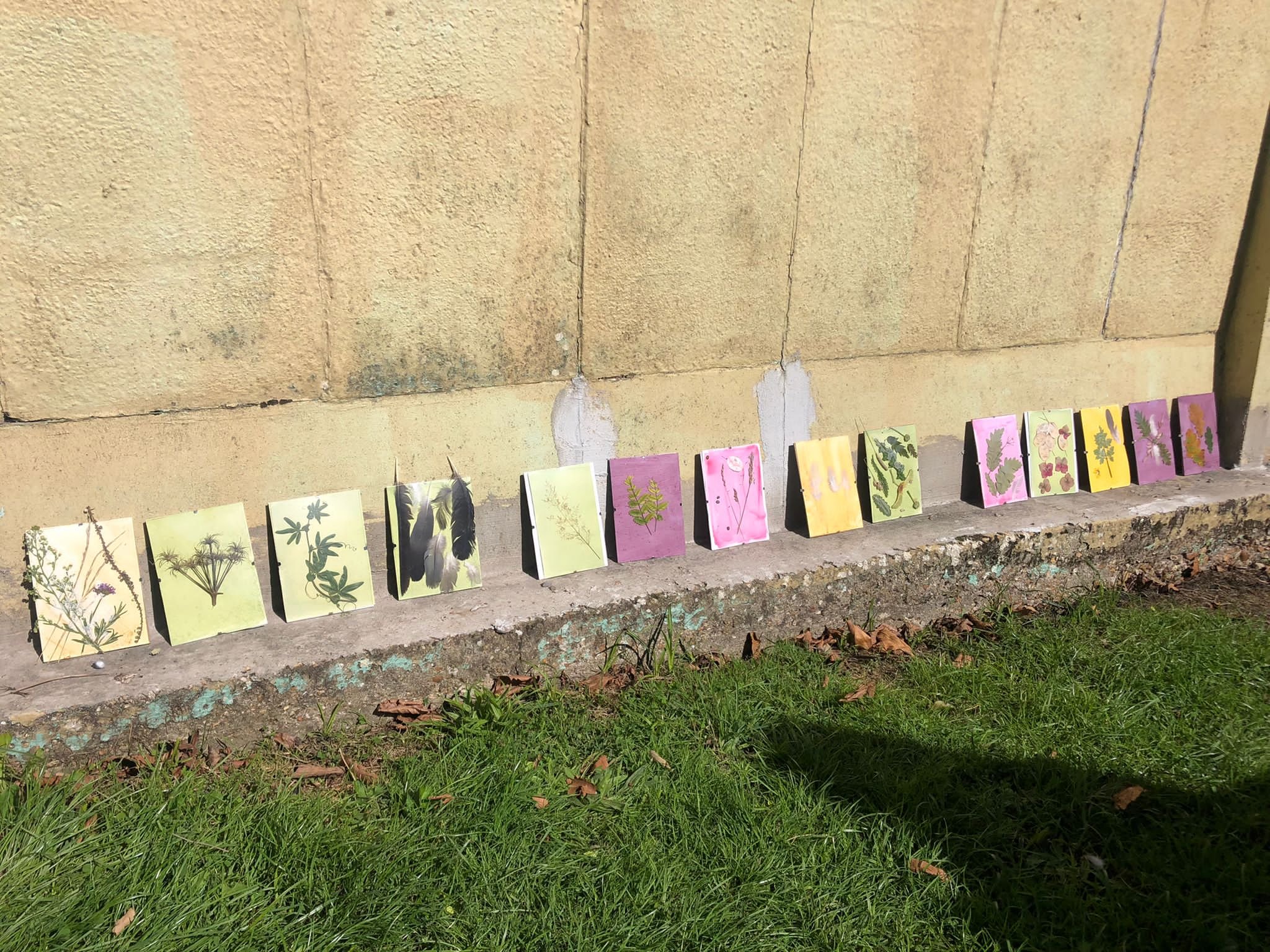
Anthotype is a historical, delicate photographic process and an environmentally friendly way of making prints using nothing other than the photosensitive material of plants found in the garden, the flower market or in the wild. We utilise natures own colouring pigments to produce photographs that have virtually zero impact on the environment.
Cycling anthotype workshop at Appley Park, Ryde.
During September we used the last of the Summer sun to lead a workshop exploring a photographic process with minimal environmental impact.
Plant emulsions were used to coat porous paper with local flora creating the compositions. Sunlight exposed the prints and as all the resources were natural, the waste went back into the earth.
Eleanor created small exposure units to hold the compositions that could be clipped to bicycle handlebars. The units enabled prints to develop as part of a journey on two wheels. The emphasis was on connecting with place; seeing what grows around us and the colours and forms the plants create.
Our Anthotype workshops were inspired by New Zealand artist Rosie Horn.
I chose Photography as the medium for my expression, yet I felt conflicted by this medium because of my concern for the environment. Photography has contributed to society's awareness of environmental issues by showing us the consequences of our actions. But I feel it is not enough to make images of these issues and even of the solutions, it is necessary to embed environmental issues and solutions through process, materials and imagery. Using alternative processes such as anthotypes works towards this idea.
I like the change of pace Anthotype brings to making images and makes me observe the weather patterns. Anthotype printing using plants means I can grow my own emulsion, and compost any prints that don't turn out. The sun is my light source so I need to consider the length of the exposure based on the weather. All this slows down my image making and puts me in touch with the environment.
Rosie Horn
You can see more of Rosie’s work here or on Instagram @photogirl168






